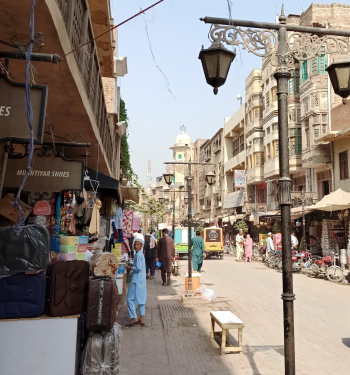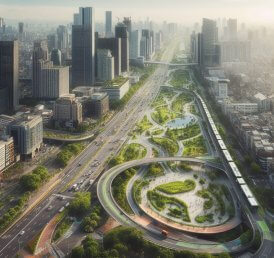The City of Men

By Wajeeha Amir
Peshawar’s walled city is—or at least should have been—the city’s major and most financially rewarding attraction. It is a magnificent site, beyond a doubt.
You take a stroll through the ancient ruins and relics in the Gor Gathri complex, which date back from the era of the Gandhara civilization up to the relatively recent British Raj. As you exit the complex, you walk through the Heritage Trail or the “food street”; a carpeted road lined with ornate streetlamps, which was originally meant to be closed off for cars but is swamped by them in reality. On either side of this remarkable street, you see shops of local products, including Peshawar’s renowned qehwa. Somewhere in the middle, a smaller alley connects the main street to the Sethi Mohalla. This mohalla consists of adjacent houses which belonged to an elite trader family of the city, in the early 19th century. The street ends at yet another monument; the Cunningham clock tower—better known as Ghanta Ghar—a commemoration of the forced service of the people of Peshawar in the first World War. It is also a commemoration of the British generosity, who erected such towers after looting many cities and making them fight British wars by force.
Throughout this journey, in the background, other unknown works of art of the older times tower over the bazaar, making the walk an experience that takes you to another time.
Another important aspect of this experience takes you to the olden times as well—one which might explain, in retrospect, why the name Peshawar is said to be derived from the Sanskrit word Purushapura: the city of men.
The walled city remains as beautiful as described from the eyes of a femme, too; however, the experience is much uglier. Perhaps, some of the beauty of it escapes the women, as they become busy struggling to feel safe and comfortable during the walk and avoid unwanted comments, gazes, and gestures. While this is a symptom of a much wider cultural problem that persists in the entire country, it is also indicative of a biased and gender-blind urban policy. The walled city has seen many renovations over time; recently. For instance, the PTI government inaugurated the aforementioned heritage trail in 2018, aimed at branding the city as an historical asset and promoting both local and international awareness and tourism. Very few of such efforts and committees, unfortunately, have been inclusive of women. Even today, as the tourism department is once again geared up to market the province, once again, to tourists all over the world, women are not seen to be given adequate representation. And unless women are involved in designing cities, cities can never be for women. This is the chronic problem of our cities. All our public places are rendered inaccessible for half the population. Even the public services, such as public transport (in cities which have a considerable public transport system, that is), are often not for women. In the absence of gender-sensitive design, even when we try to solve these problems, we apply a temporary band-aid of engineering solutions, rather than thinking and acting in a nuanced manner.
Although eradicating the culture of misogyny that prevails in our country is way beyond the scope of urban policy—a discipline and practice that itself struggles to survive the top-down imposition of the bureaucracy—some small steps in our city planning can go a long way. What these steps could be is a longer conversation.



